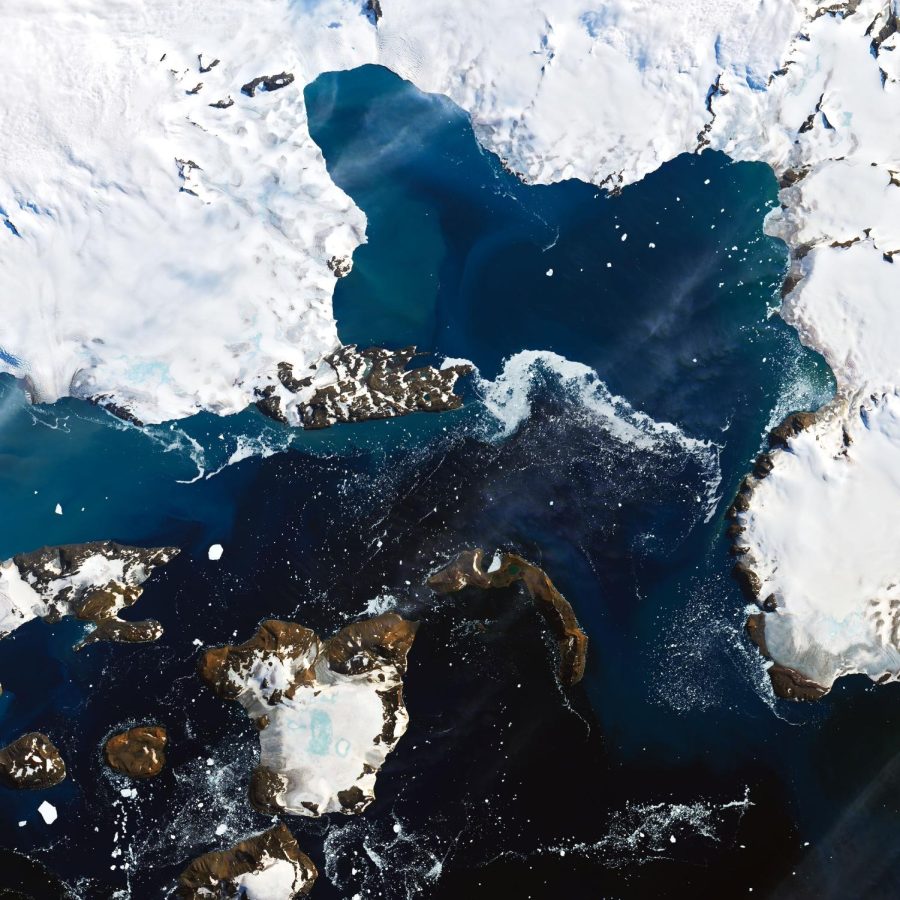East Antarctic ice shelf collapses during heat wave
April 15, 2022
In East Antarctica, an ice shelf about the size of New York City collapsed on the Conger Glacier last month. It was first spotted by scientists at the Australian Bureau of Meteorology.
Ice shelves are floating fragments of a larger ice sheet that separate from the main ice-mass due to stress cracks and ocean water that erodes its edges.
It is common for Antarctica’s ice shelves to spawn icebergs, but it is less common for them to completely disintegrate and change the landscape of the coastal ice.
This was the first time since satellites began observing Antarctica in 1979 that an ice shelf completely collapsed on the eastern part of the continent.
Rapid ice shelf loss due to climate change is a common source of concern in West Antarctica.
“In 1995, the smallest segment, Larsen A, collapsed and in 2002 the larger Larsen B collapsed. A large section of the Larsen C shelf collapsed in 2017, forming a massive 2,200 square-mile iceberg known as A-68.” according to El País.
The effect of the latest ice shelf collapse is problematic not only because of its size being relatively small on Antarctica’s scale, but because of its location.
All other serious ice shelf collapses previously took place in West Antarctica. Now, the collapse near the Conger Glacier in East Antarctica, which was considered stable for many years, worries scientists because it could potentially signal the worsening effects of climate change in the region.
Images acquired by the Operational Land Imager on Landsat 8 show the melting process was fast. Images from early March 2022 show the ice shelf intact, but by mid-March, the shelf was completely disintegrated.
“The whole shelf collapsed in just around two weeks.” Christopher Shuman, a University of Maryland glaciologist, said to NASA Earth Observatory.
Ice shelves naturally go through a process of calving, characterized as gradual and small-scale splitting and melting of glaciers.
According to Dr. Catherine Walker of the Woods Hole Oceanographic Institution, the ice shelf in question was losing ice at an average rate of about one square kilometer per day through the natural process of iceberg calving.
In early March 2022, a large iceberg, labeled by researchers as C–37, calved off the Glenzer Glacier. The iceberg initially measured 144 square kilometers, or 56 square miles, but by March 12, it was at 81 square kilometers, or 31 square miles, detached from neighboring Bowman Island.
This detachment and reduction in size destabilized and primed the shelf for collapse. By March 15, an atmospheric river coupled with ocean swells and harsh winds were enough to trigger a complete collapse.
The collapse of C–37 created another named iceberg C–38 that measured around 415 square kilometers or 160 square miles on March 16, but by March 21, this shelf also collapsed and dispersed into the sea.
While the collapse was not a complete surprise, it happened faster and earlier than most experts predicted due to recent heat waves. The atmospheric river contained “air heavy with water vapor” as it traveled across East Antarctica, according to the New York Times.
The weather event resulted in record-breaking temperatures reaching as high as 40 degrees Celsius, well above average for this time of the year.
Although ice calving is a regular occurrence, scientists are alarmed by the trend of ice shelves’ sudden collapses because these formations are the “safety band” propping up the Antarctic Ice Sheet, according to Dr. Walker.
When ice shelves collapse, the big sheets of ice behind them can follow into the ocean quickly, raising sea levels as they collapse.
“We don’t see any indication that this is going to happen in the rest of East Antarctica anytime soon,” Dr. Walker said.
But according to NPR, “scientists say they wonder if they have been overestimating East Antarctica’s stability and resistance to global warming.”
Peter Neff, an ice scientist at the University of Minnesota, worries about the future of East Antarctica because any more melting in the region could trigger a massive increase in water levels. The east side of the continent has five times more ice than the west, and the majority of ice research is concentrated in West Antarctica.
“Previous studies have indicated that almost 75% of the Antarctic ice shelves across the entire continent have retreated over the last 50 years and if global warming reaches a level of 2 degrees Celsius above the pre-industrial era and this increase is prolonged over time, much of the ice in this huge area of the eastern Antarctic will melt, which alone could raise global sea levels by as much as 53 meters,” according to El País.








